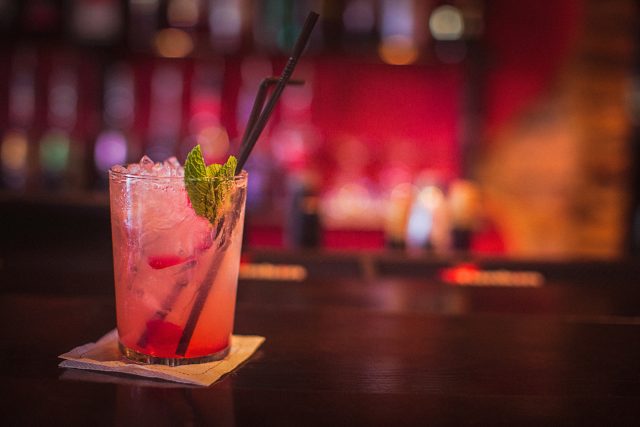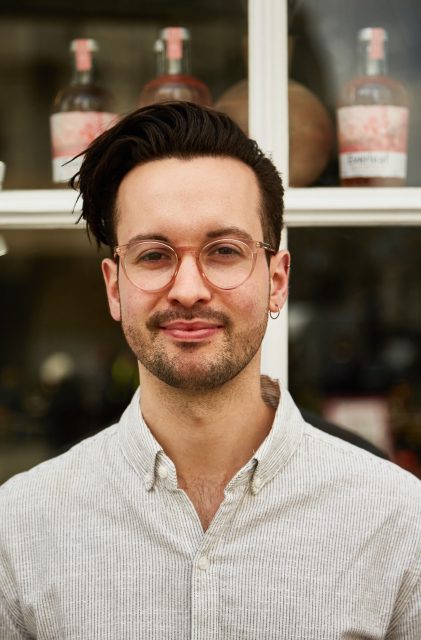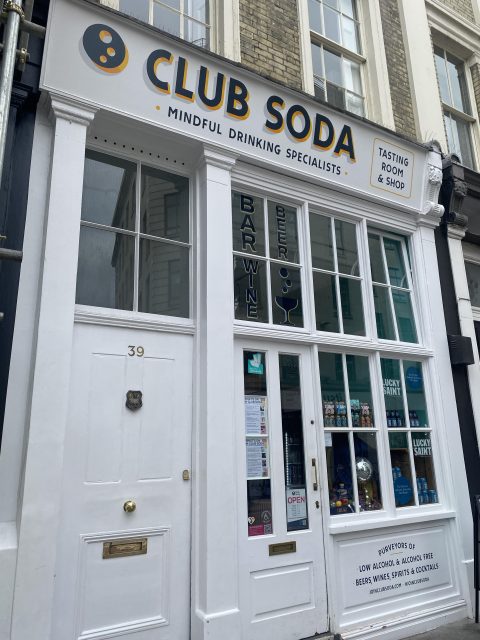This website uses cookies so that we can provide you with the best user experience possible. Cookie information is stored in your browser and performs functions such as recognising you when you return to our website and helping our team to understand which sections of the website you find most interesting and useful.
How to make an alcohol-free cocktail, according to an expert
What do salt, ice cream and Stevie Wonder songs all have in common? They’re the perfect ingredients for making an alcohol-free cocktail, as Eloise Feilden finds out.

The world of alcohol-free drinks is on the up, with more mainstream players and independent brands tapping into the category as consumer demand grows.
No- and low-alcohol sales in the world’s 10 leading markets surpassed US$11bn in 2022, according to IWSR figures, with volumes poised to grow at a CAGR of +7% between 2022 and 2026.
Noah Villeneuve, whose “chequered 20s” led him from the music industry to life in the on-trade as a sommelier, now heads up creative development at Club Soda, a no- and low-alcohol drinks retailer in London’s Covent Garden. He gave us some of his top tips on how to make alcohol-free cocktails which taste just as good as their boozy counterparts.
1. Add Salt
“Salt goes a really long way in cocktails,” Villeneuve says. Salt acts as a natural flavour enhancer, and “really binds everything together in terms of non-alcoholic”.
Making up for the lack of alcohol is one of the biggest challenges with mocktail making, as taking away the key ingredient can often leave a drink feeling thin or lacking in complexity. Alcohol itself is a flavour enhancer, so replacing it with something like salt can make up for its absence.
“It’s a really important thing to use in alcohol-free because you’ve got to look to other places” to find flavour, Villeneuve says.
And it doesn’t end with salt, according to the former sommelier, “outsourcing things like vinegar and different styles of acid and non conventional cocktail ingredients” is key to a good recipe.
“People are always quick to say ‘I noticed a lack of alcohol here’, so what can you fill the void with?”

2. Mine the classics
“Riffs on classics” are an easy way to go when it comes to creating cocktails. This is the origin of most of the world’s cocktails, alcoholic or not, so is often the best place to start.
“It’s hard to come across a unique idea at this point,” Villeneuve says.
Club Soda’s cocktail menu includes twists on classic cocktails like the Espresso Martini and the Pina Colada.
3. Inspiration is everywhere
Beyond traditional cocktails, inspiration can come from anywhere, and Villeneuve likes to get creative with his flavour combinations.
“I’ll find inspiration around a cocktail from the weirdest things,” he says. “It’s not necessarily classic cocktails, it can just be one ingredient.”
His main source of inspiration? Ice cream flavours.
“I have a big ice cream fascination. I was in Barcelona a few months ago and tried a coconut and coriander gelato, and I thought: That is incredible. I’m making that into a drink.”
When he’s not taking flavour ideas from dessert menus, Villeneuve often turns to music, inventing puns on song titles which work well with specific ingredients.
The ‘i just called to say i love brew’, inspired by the classic Stevie Wonder song, combines Three Spirit Social Elixir, Big Drop Galactic Milk Stout, Good Koffee Green Kakao, All The Bitter Aromatic and sea salt.
Club Soda’s Beatles-inspired ‘baby you can drive my sidecar’ contains Lyre’s American Malt, Lyre’s Orange Sec, Sprigster, Supasawa, All The Bitter Orange and sugar.

4. Take your time
“It’s a real test of patience,” says Villeneuve, so it’s ok not to get it first time round. “”With alcohol, just because there’s so much more history of recipes, it’s way easier to nail a recipe first or second try. With alcohol-free, you have an idea of what will work and then you go to make it and it doesn’t always pan out that way,” he explains.
The two main things needed to succeed in the end are “practice and education”.
“It’s about understanding the products really well and what goes in them,” he says, in just the same way as a bartender in a traditional bar would.
“When people talk about gin and rum, they have an understanding of how those are made. Therefore you know what mouthfeel it’s going to have, what texture, what weight, what acidity, what structure it brings to a drink,” Villeneuve says. “In alcohol-free if you don’t know that, you’re going to get let down pretty easily because you go to put it in a drink you think it makes sense for because of its colour and smell, and it just doesn’t work that way.”
5. Trial and error
Even for a professional like Villeneuve, cracking the code on certain alcohol-free cocktails takes time, and a fair few mistakes.
“Ultimately, a lot of the drinks I’ve come up with have have been multiple iterations,” he says.
“It’s not one size fits all. I like to keep it fresh and not have a formula for every time — having a new strategy really makes it useful to keep your creative juices alive.”
He notes: “It’s about always challenging yourself and always putting yourself out of your comfort zone. I constantly try and adopt techniques that I’m not familiar with that I have to learn whilst I’m doing it, to make myself uncomfortable.”

